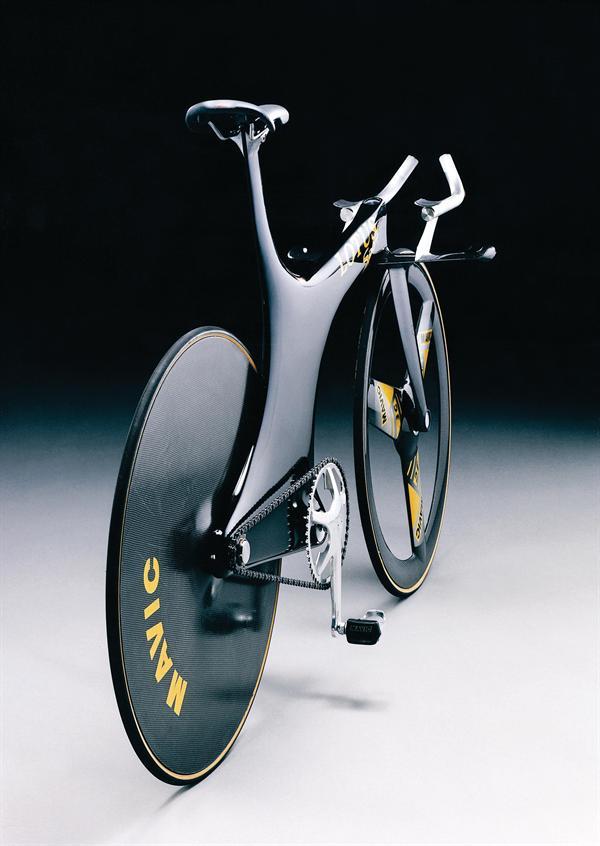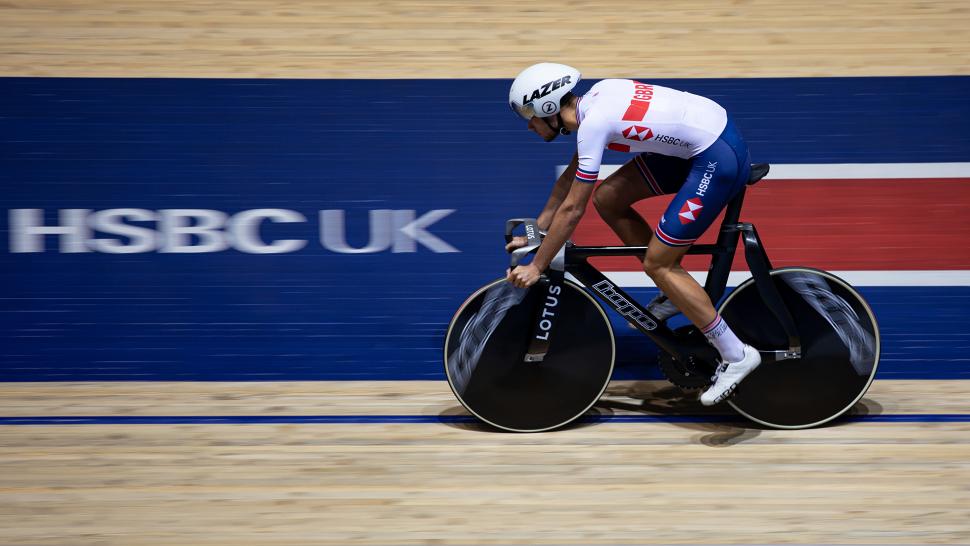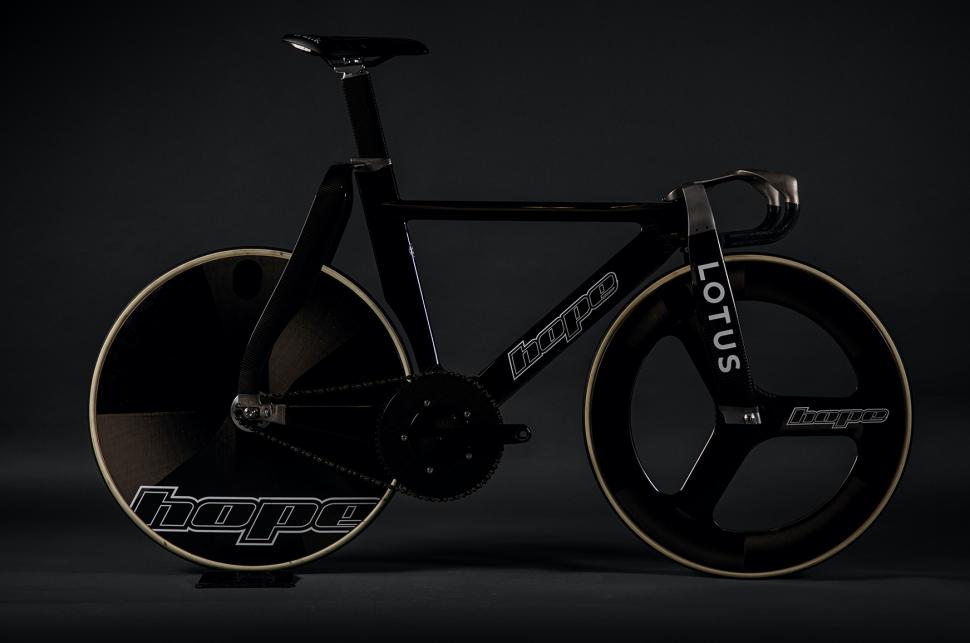- News
- Reviews
- Bikes
- Accessories
- Accessories - misc
- Computer mounts
- Bags
- Bar ends
- Bike bags & cases
- Bottle cages
- Bottles
- Cameras
- Car racks
- Child seats
- Computers
- Glasses
- GPS units
- Helmets
- Lights - front
- Lights - rear
- Lights - sets
- Locks
- Mirrors
- Mudguards
- Racks
- Pumps & CO2 inflators
- Puncture kits
- Reflectives
- Smart watches
- Stands and racks
- Trailers
- Clothing
- Components
- Bar tape & grips
- Bottom brackets
- Brake & gear cables
- Brake & STI levers
- Brake pads & spares
- Brakes
- Cassettes & freewheels
- Chains
- Chainsets & chainrings
- Derailleurs - front
- Derailleurs - rear
- Forks
- Gear levers & shifters
- Groupsets
- Handlebars & extensions
- Headsets
- Hubs
- Inner tubes
- Pedals
- Quick releases & skewers
- Saddles
- Seatposts
- Stems
- Wheels
- Tyres
- Health, fitness and nutrition
- Tools and workshop
- Miscellaneous
- Tubeless valves
- Buyers Guides
- Features
- Forum
- Recommends
- Podcast
TECH NEWS
 Chris Boardman's Lotus Type 108 Olympic Pursuit Bike credit Design Museum
Chris Boardman's Lotus Type 108 Olympic Pursuit Bike credit Design MuseumBike at bedtime: take a look at Chris Boardman’s Olympic-winning Lotus Type 108 track bike
Main image credit: Design Museum
Chris Boardman set a world record for the 4,000m individual pursuit at the 1992 Barcelona Olympics on the revolutionary Lotus Type 108. Designed by Norfolk-based Mike Burrows, the Type 108 was then modified and perfected through wind tunnel testing conducted by the Lotus aerodynamics specialist Richard Hill.
The frame of the Type 108, also known as the LotusSport Pursuit Bicycle, is a carbon composite monocoque that uses advanced aerofoil cross-sections, with the frame itself acting as a ‘wing sail’.
Boardman caught World Champion Jens Lehmann in the final of the 1992 Olympics, having already set a world record of 4 minutes 24.496 seconds in the quarter-finals on the cutting-edge aero frame.
A total of 15 Type 108s were built, including one prototype in 1991 and three frames for use in the Olympic Games.
The road-going version was the Lotus 110, on which Boardman rode to victory in 1994’s Tour de France prologue to clinch the yellow jersey. Here’s our review on the Lotus 110: The Story of a Bike book, if you’re interested in learning about the bike’s fascinating backstory.
“Boardman’s famous ‘Superman’ riding position was about creating an airflow channel between the rider and the bike frame, minimising interactions,” explains Lotus’ chief aerodynamicist Hill.
However this monocoque design was banned in professional cycling following the UCI’s Lugano Charter of 1996, and so with the updated regulations, Lotus has since shifted its focus towards getting the rider and the bike to positively interact with each other with its new track bike developed for this year’s Team GB riders.
“In this way they can benefit each other and cause each to lower the drag of the other,” explains Hill. “We achieve that by careful manipulation of the interference between the two.”
Hill was heavily involved in optimising the aerodynamic performance of the new Lotus Olympic track bike the Team GB riders are using in Tokyo at the Izu Velodrome this upcoming week.
Hill explained how aerodynamics have moved on in the years since he worked on the Type 108 in an interview on Lotus’ site: “Back then it was simply about developing an aerodynamic bike that would go fast.
“But really there are two separate elements – the bike and the rider – which come together as one to move through the air. That was the approach we took with the new bike.
“Put simply, since 1992 we have learned how to use the bike’s design to make the rider more aerodynamic, and also vice-versa.
“What’s improved is our understanding of how to get a bike and its rider round the track together in the fastest possible time.”
Find out more about over here about Team GB’s Tokyo Olympic track bike manufactured jointly by Lotus and Hope Technology, with Renishaw contributing 3D printed titanium parts.
Anna has been hooked on bikes ever since her youthful beginnings at Hillingdon Cycle Circuit. As an avid road and track racer, she reached the heady heights of a ProCyclingStats profile before leaving for university. Having now completed an MA in Multimedia Journalism, she’s hoping to add some (more successful) results. Although her greatest wish is for the broader acceptance of wearing funky cycling socks over the top of leg warmers.
Latest Comments
- the little onion 22 min 11 sec ago
It's worse than apartheid.
- Sriracha 32 min 9 sec ago
The inference is that it is that they have to take trained bobbies off the beat to sit in front of monitors reviewing hours of cctv footage. Surely...
- Car Delenda Est 50 min 18 sec ago
"Thè issue is splitting our voters off to Greens and Remain and we'd like to put that cat back into the bag"
- MikeLondonCommuter 1 hour 19 sec ago
Have reported to police. It was registered but I forgot the code so have emailed bike register company hoping they can help.
- Eton Rifle 58 min 53 sec ago
Very sad news. She was a great voice for cycling on twitter. I deleted my account months ago for obvious reasons and couldn't find her on Bluesky.
- Jaijai 1 hour 16 min ago
Why isn't he being done for failure to identify ? Looks like it's a taxi /minibus .Garentee they claimed everyone drives it .Be the owner of the...
- HKR 1 hour 47 min ago
I've been using the FlowBio S1 sensor for a while now. Yes, it's bloody expensive but I've hyperhydrosis so knowing how much I sweat and how much...
- a1white 2 hours 31 min ago
Absolutely spot on. Personally i stopped using his wet lube as I found it an absolute bugger to clean off. It's affective and lasts well but it...
- a1white 2 hours 54 min ago
Is this one on your test list? I'm guessing the makeup of it is completely different from previous muc-off lubes. If, as they claim, it's...
- pockstone 4 hours 12 sec ago
Perhaps they should start with killer drivers? https://www.theguardian.com/society/2025/jan/22/dwp-crackdown-could-see-...



Add new comment
3 comments
I don't think I'll ever tire of seeing that Lotus 108.
Big fan of the new Hope Lotus bike too.. I think it would be really interesting to ride one.
Keep training then Pete, Ed Clancy has got to be close to retirement which will leave a space in the team pursuit 😀. Like you I could look at that old Lotus all day, I have seen a TT version in the national cycle museum in Llandrindod Wells, worth a look if you are ever in the area (nice cafe on the side of the lake just behind the museum too)
Just read that Ed has retired, what a shame, the end of an era, a very underrated and unassuming rider, all the best with whatever you do next Ed (in the very unlikely event that you are actually reading this).